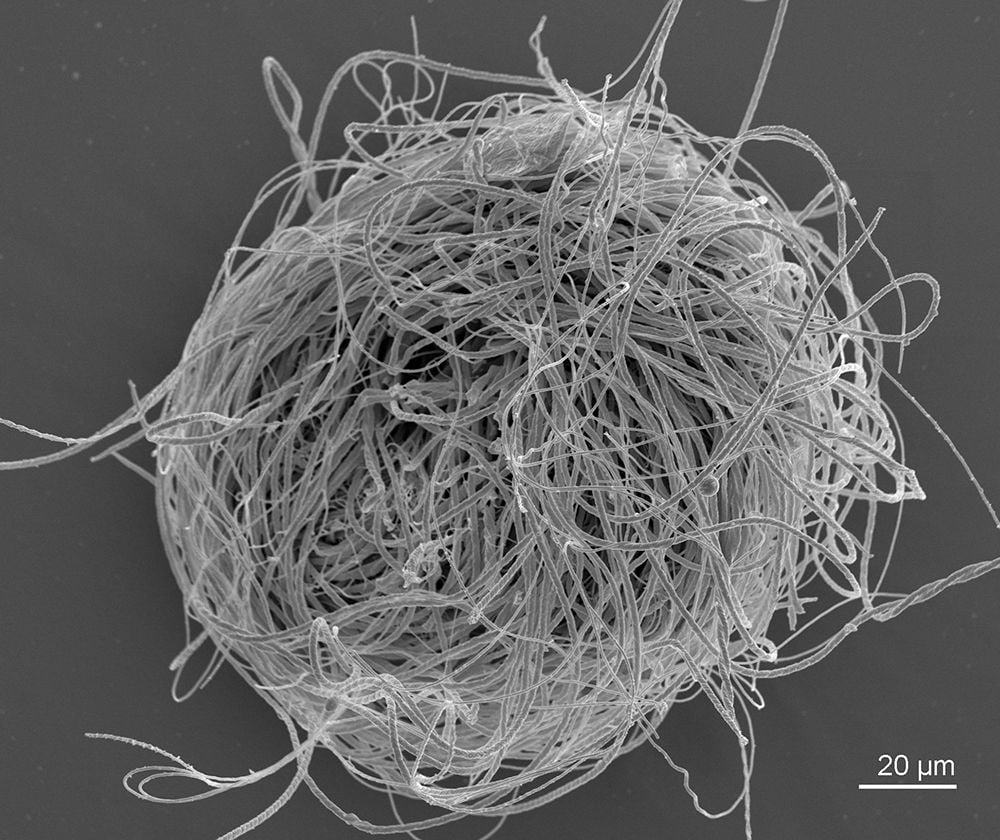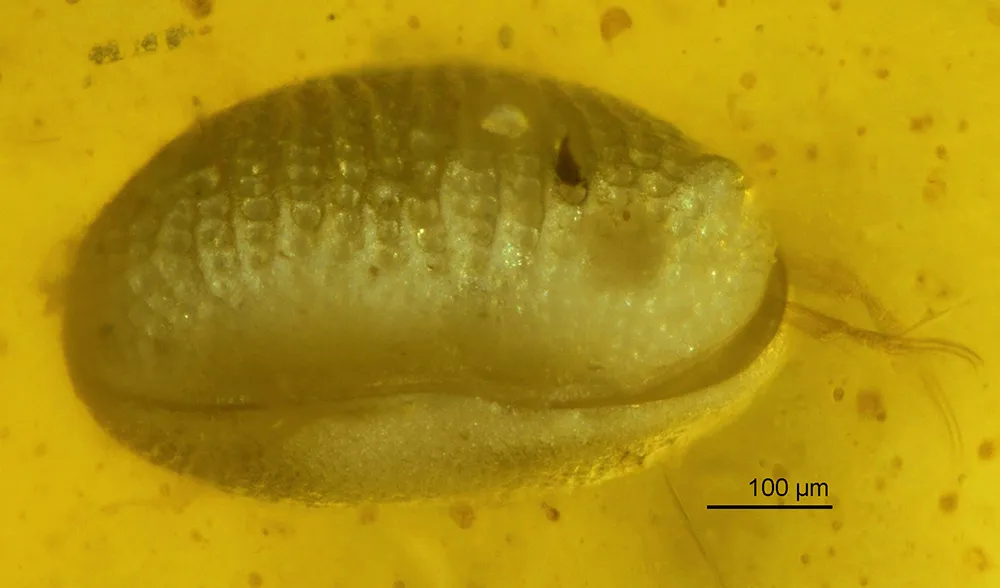Scientists Discover Oldest Sperm Yet Preserved in Amber
The longest sperm in the sample is one-third the body length of the creature that produced it
/https://tf-cmsv2-smithsonianmag-media.s3.amazonaws.com/filer/eb/49/eb494691-d1a8-4aea-9f8f-f27e46411d4c/amberostracod.png)
Scientists have identified 100 million-year-old sperm in a postage-stamp sized piece of amber, Stephanie Pappas reports for Live Science.
The sperm belong to an ancient ostracod, a tiny crustacean with a two-piece shell similar to a clam and shrimp-like legs that poke out of the shell’s opening. The sperm is the oldest example yet to be identified—50 million years older than the previous record-holder, which was found in the cocoon of an extinct species of Antarctic worm. But also, the sperm is gigantic. At least, relative to the half-millimeter-long creature that produced it—this sperm "unspools to a jaw-dropping 0.46 inches (11.8 millimeters), far longer than the animal that produces it," writes Pappas.
The sperm in the amber was discovered inside of a female ostracod, which suggests she mated just before the tree’s resin entombed her. She is one of 39 half-millimeter crustaceans preserved in the amber sample. A total of 31 of those belonged to a previously unidentified species ostracod, now named Myanmarcypris hui.
The reproductive strategy of using gigantic sperm is unusual, but not entirely unique. Modern ostracods have giant sperm, too, as does one species of modern fruit fly, writes Becky Ferreira, reporting for Vice. But the giant sperm preserved in amber and described in a paper published last week in the Proceedings of the Royal Society B, shows that strategy can be surprisingly successful.

"Previously, we were not sure if animals that 'switched' to using these giant sperm at a certain point in their evolutionary history are doomed to become extinct very quickly," one of the study's authors Renate Matzke-Karasz, a paleontologist from Ludwig Maximillian University paleontologist tells Emma Betuel of Inverse. "But in ostracods, it worked for more than 100 million years."
Extra-large sperm require extra-large reproductive organs to move them around, "enormous costs," Matzke-Karasz explains to Vice. Unlike a group of smaller swimmers that can move on their own, giant sperm need to be ferried straight to their destination. And both male and female ostracods have pairs of reproductive organs—two sperm pumps and penises on each male, and two paired vaginas in each female.
“This is a lot of biological energy that must be allocated to reproduction, so you might think that this doesn't make sense from an evolutionary standpoint,” Matzke-Karasz tells VICE. But after 100 million years, “for ostracods, there must be an advantage, otherwise it wouldn't exist anymore.”

The research team used 3D X-ray techniques to map the soft tissues of the preserved ostracods. When Chinese Academy of Sciences paleontologist He Wang mapped the sperm, it looked like a messy, coiled ball. The longest continuous cell found is at least 200 microns long, about a third of the creature’s body length. Wang sent the 3D image to Matzke-Karasz to get a closer look.
"I immediately congratulated him on having reconstructed the oldest animal sperm," Matzke-Karasz tells Live Science.
The researchers can estimate the age of their sample because the amber was mined in Myanmar, where all of the amber is about 100 million years old. But as the Atlantic’s Katharine Gammon reported in 2019, amber there is mined under dangerous conditions and some scientists have begun to question the ethics of studying it. Joshua Sokol and Wudan Yan reported for Science magazine in 2019 that the sale of Burmese amber may fund the army and militias fighting in northern Myanmar.
The amber in the new study was mined “near Noije Bum Village, Danai Town in northern Myanmar,” according to the paper. The amber was held by a private collector in China, who noticed the tiny creatures encapsulated inside and offered it for scientific study, Matzke-Karasz tells Inverse. The amber is now held in the Lingpoge Amber Museum, according to the paper.